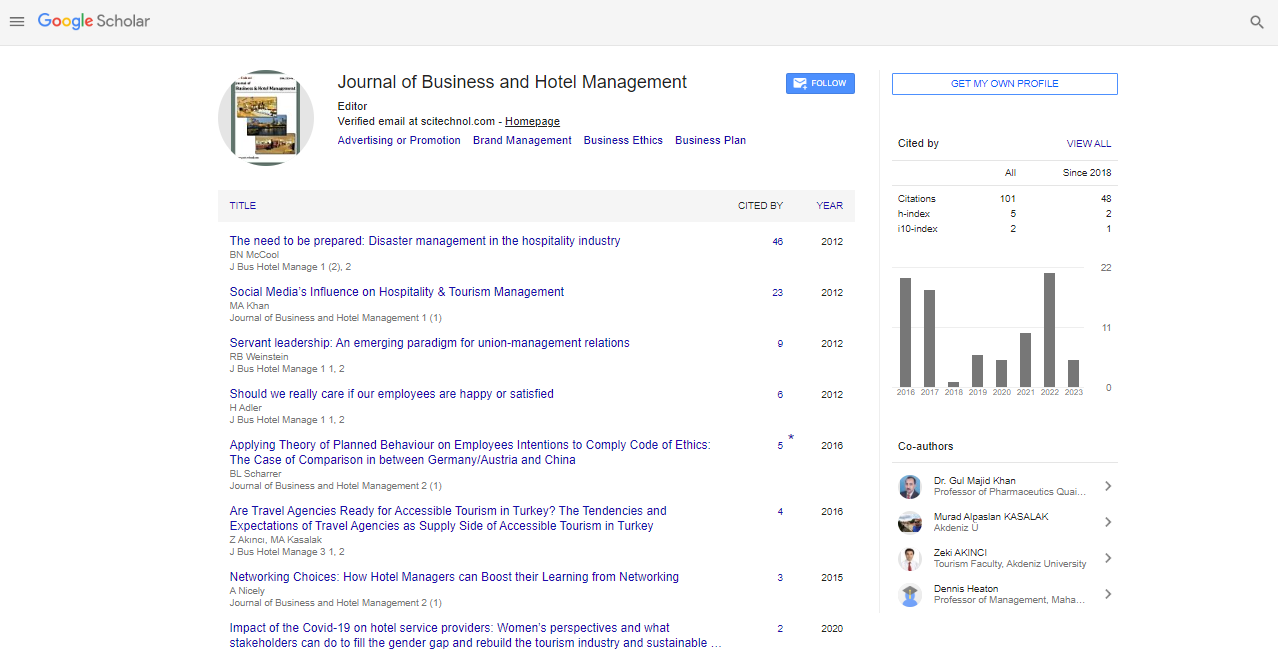Opinion Article, J Bhm Vol: 9 Issue: 1
Customer Experience Advanced by Augmented Reality
Graeme Pantea*
Department of Business Management, University of Stellenbosch, Stellenbosch, South Africa
*Corresponding Author: Graeme Pantea
Department of Business Management,
University of Stellenbosch, Stellenbosch, South Africa;
E-mail: graemepant@sun.ac.za
Received date: 03 February, 2023, Manuscript No. JBHM-23-93137;
Editor assigned date: 07 February, 2023, PreQC No. JBHM-23-93137 (PQ);
Reviewed date: 21 February, 2023, QC No. JBHM-23-93137;
Revised date: 28 February, 2023, Manuscript No. JBHM-23-93137 (R);
Published date: 07 March, 2023, DOI: 10.4172/2324-9129.9.1.126
Citation: Pantea G (2023) Customer Experience Advanced by Augmented Reality. J BHM 9:1.
Description
Augmented Reality (AR) has become an increasingly popular tool in Customer Experience (CX) management. By blending virtual elements with the real-world environment, AR can provide customers with a more engaging and immersive experience. In this article, we will explore how AR can enhance CX, the benefits and challenges of using AR in CX management, and some real-world examples of AR in action.
Enhancing CX with AR
One of the key benefits of AR is its ability to provide a more personalized and interactive customer experience. AR can allow customers to visualize products in a virtual space, see how they would look in their homes, and even customize products to their individual preferences. For example, a furniture retailer can use AR to let customers see how a particular sofa would look in their living room, change the color or fabric, and even see how it fits with other pieces of furniture in the room.
AR can also be used to provide customers with interactive instructions or demonstrations. For example, an automotive manufacturer can use AR to provide customers with a step-by-step guide on how to perform routine maintenance tasks or make repairs. This can not only improve customer satisfaction but also reduce the need for costly customer support calls.
Benefits and Challenges of Using AR in CX Management
Using AR in CX management can offer several benefits, including:
Increased customer engagement
AR can provide customers with a more immersive and interactive experience, which can increase their engagement with the brand and product.
AR can help customers make more informed purchase decisions, reduce returns, and improve their overall satisfaction with the product or service.
Competitive differentiation
By offering a unique and innovative customer experience, brands can differentiate themselves from competitors and attract new customers.
However, using AR in CX management also presents some challenges, including:
Technical limitations
AR technology is still relatively new and may not always work as expected. Technical issues can lead to a frustrating customer experience, which can have a negative impact on the brand's reputation.
Cost
Implementing AR technology can be costly, particularly for small businesses or those with limited budgets
Privacy concerns
AR requires access to customer data, which can raise privacy concerns. Brands must be transparent about how they use customer data and ensure that it is protected.
Real-World Examples of AR an Action
Several brands have already implemented AR in their CX management strategies. For example:
Sephora
The cosmetics retailer has developed an AR app that lets customers try on makeup virtually. The app uses facial recognition technology to map the customer's face and apply makeup in real-time, allowing them to see how different products would look on their skin before making a purchase.
IKEA
The furniture retailer has developed an AR app that allows customers to visualize how furniture would look in their homes. The app uses the customer's smartphone camera to create a 3D model of the room, which can then be populated with virtual furniture.
Porsche
The luxury car manufacturer has developed an AR app that provides customers with an interactive guide to the features of their vehicle. The app uses AR to overlay information onto the physical vehicle, allowing customers to see how various features work in realtime.
Conclusion
AR can provide brands with a powerful tool to enhance CX management. By providing customers with a more personalized and interactive experience, AR can increase customer engagement, satisfaction, and loyalty. However, brands must be aware of the challenges of using AR, including technical limitations, cost, and privacy concerns. By carefully planning and implementing AR strategies, brands can provide customers with a truly unique and innovative experience that can set them apart from competitors.
 Spanish
Spanish  Chinese
Chinese  Russian
Russian  German
German  French
French  Japanese
Japanese  Portuguese
Portuguese  Hindi
Hindi 